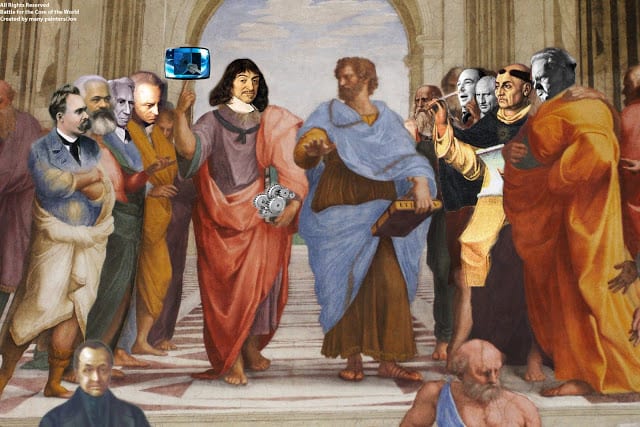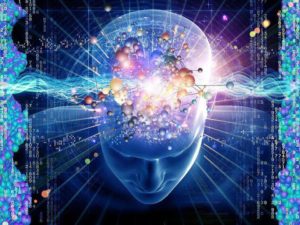Explanation of the Blog’s New “Logo”

| From the left: Nietzsche, Marx, Russell, Kant, Descartes From the right: G.K. Chesterton, Aquinas, Cicero, C.S. Lewis, Plato |
I thought I would take the opportunity to explain what my bold modification of Rafael’s School of Athens is meant to convey on this blog. There is nothing profound about it really. I did it because I wanted to “update” the painting to our time, instead of Rafael’s time–shall we say…”modernise” it? Instead of Plato disputing with Aristotle, now Aristotle is in the same group as Plato. This is because the division has now become a debate between the classical view of the world, which generally holds that wholes are something above and beyond their parts and modern philosophy, which generally holds that wholes are reducible to their parts.
Besides many other differences, this is the underlying contention that I have concerned the blog with philosophically, because it does in fact inevitably lead to God being about as likely as Russell’s teapot (Bertrand Russell famously stated that God is as likely as an invisible Chinese teapot floating around out in outer space somewhere).
- The modern philosophical view has implications which are sociological (Nietzsche), logical (Russell) and epistemological (Kant and Descartes). In a view of the world that everything is reducible merely to its parts we are compelled to a mechanical approach to the world where we must study as many parts as we can, crudely put, to disabuse ourselves of the illusion of our “natural perception” of the world which often causes us to see something in reality which is not there (in the parts)–like form and purpose. The real cause of everything is merely the material and efficient cause (matter and motion). So, metaphorically, what is two? It is in the strictest sense, one plus one, two itself, or 1.5 plus 0.5–but 0.3 + 0.7 + 0.4 + 0.6 is even better/more descriptive. But ontologically, they are all exactly the same and any difference we perceive is merely in our minds. Want to know about why animals migrate? Break the animals down into parts and discover the mechanism behind it. What causes the animals to migrate is mechanical factors X, Y and Z–the nerves sense cold causing discomfort. Any perception that there is something above and beyond X,Y and Z which causes the animal to migrate is an idea that we impose on the animal from our minds based on past experiences and is not really inherent in the animals migration. Migration is merely a mechanism of certain habits which allowed those animal possessing the habit to continue living more than others by “failing less often”–evolution. There no question reducing wholes to their parts is more useful when it comes to developing technology, but that does not mean that it is truer or closer to the good of all.
- The classical philosophical view generally holds that objects/wholes are not ontologically identical with their parts. Again, in a metaphor, what is two? Two in the strictest sense, is two. One plus one can be used to describe two but two is in itself something other than 1.5 plus 0.5. How does this metaphor translate? When someone asks why do animals migrate, any of the above men would acknowledge than X, Y and Z are the means by which migration happens but that there is something more than just the material and efficient cause/mere coincidence, there is also a formal and final cause. The objects behave that way because that “tendency” is perfective of is their natures, however it developed. There is an actual inherent purpose in the moving of the animals that supercedes the idea that the migration took place by mere elimination of the non-migrators. This view of the world has been largely misunderstood after the rise of modern philosophy in what it was originally saying. Aristotle would not deny the mechanism (X,Y and Z) which brought about the animals migration (the quantifiable and useful results of scientific inquiry) he merely wished to maintain that common sense tells us that all objects are no so redicible to their mechanical parts.
How many words does it take to describe a word in the dictionary perfectly, such that you must include every instance of its both past and possible usage? It is quantifiable, but do the quantities of usage tell us anything at all about how the word actually applies to the world around us? Though words and the above numbers seem very much dependent upon the state of our minds, we cannot deny that these numbers and words have actual application to reality. Why? Stay tuned, or if you can’t take a look at:




